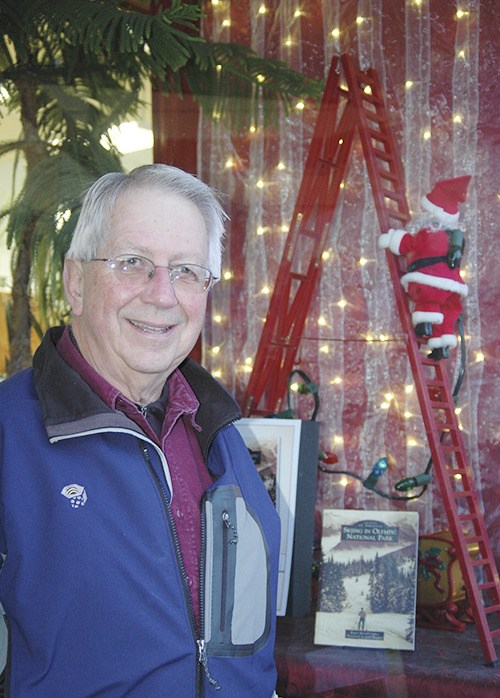With the exception of 14 years away while Roger Oakes attended medical school and served in the Army, the longtime local doctor and mountain enthusiast has spent most of his life on the Olympic Peninsula and always has been drawn to the Olympic Mountains – especially the high country where trees become far and few between, alpine streams seep from ancient glaciers and the air is crisp and cool nearly year-round.
Knowing he wanted to live where he had family roots and be near the mountains he had grown an attachment to, Oakes pursued a career in medicine and retired from his Port Angeles-based practice after 37 years in 2011. Retirement allowed Oakes to finally delve into the local history surrounding skiing after his interest was piqued in 2001 during a brief sabbatical where he spent hours in the park’s cultural resource center learning the rich relationship between skiing and nearby mountains.
Oakes followed his curiosity and it led him to write the newly released book, “Skiing in Olympic National Park.” Having never written a book before, Oakes pitched the book idea to officials with Arcadia Publishing, the company responsible for a series of books known as “Images of America.”
“The ‘Images of America’ books are structured,” Oakes said. “At first I thought it was too ‘cookbook’ for me, but it turned out to be pretty good.”
The book uses a series of photographs and captions to tell the evolution of skiing in the Olympic Mountains while providing insight into the area’s cultural past, unique environmental characteristics and relationship with the park service.
“The most challenging part was getting good pictures,” Oakes said. “It’s amazing how many people have skied up there but didn’t take pictures or couldn’t find them.”
After months of networking, announcements in the newspaper and scouring the National Park and U.S. Forest Service’s archives, Oakes was able to provide snapshots of years past with 197 historical photographs, some dating back to the late 1920s.
“Deer Park was the real story because it was such a popular, local scene,” Oakes said. “There was once a lodge there and a lot of people have many very fond memories.”
Under the control of the Forest Service and before the creation of Olympic National Park, skiing began at Blue Mountain in 1934 after a narrow, notoriously steep and twisting road, Deer Park Road, was built. In response to the Great Depression and seizing opportunities enacted by the New Deal, such as the Civilian Conservation Corps, the Forest Service pushed to develop areas and construct roads like Deer Park Road.
Though decades have long passed, the road remains a daunting one at its upper reaches, Oakes said. By about 1936 the first ski lift was established at Deer Park and the area became the “premier” ski area in the Northwest, he said.
Within his 18-month window to complete the book, Oakes learned the Olympic Mountains provided far more than opportunity for outdoor recreation, but places like Deer Park were once a social hub.
“I don’t know if anyone has ever told that story very well,” Oakes said, referring to the social dynamic behind the ski culture in the mid 1930s, 1940s and 1950s. “While researching for this book, I really began to realize Deer Park was more than just a ski area.”
Relying on both countless hours of research and his own ongoing involvement with the Hurricane Ridge Winter Sports Club (a nonprofit corporation responsible for the ski area), Oakes also highlights the National Park Service, its creation and the reasoning behind moving the ski area from Deer Park to Hurricane Ridge.
“There are only two ski areas left in national parks – here and one in Yosemite,” Oakes said. “Most ski areas are in national forests.”
Because the ski area at Hurricane Ridge is within the confines of Olympic National Park, it is as big as it’s ever going to get, Oakes said, noting the restrictions unique to the area because of its location. However, Oakes mentions in the book’s introduction that “many think that small, affordable ski areas like this will make a comeback.”
Unlike the majority of ski areas that have experienced technological advancements and physical expansion, skiing within the vast wilderness of Olympic National Park is somewhat like taking a step a back in time – even two of the three original engines used at the Deer Park ski area throughout the 1930s are still used at Hurricane Ridge, Oakes said.
“There is still so much more to be told,” Oakes said. “I think I will continue digging up more history and I hope the book will be a catalyst of sorts to gather more information.”
Royalties collected from “Skiing In Olympic National Park” support Hurricane Ridge Winter Sports Education Foundation. The book is widely available at local stores, including Port Book and News.


